ClimateTech: How to Unlock Net Zero with Your Business

As we enter a new era of climate consciousness, businesses have an opportunity to step up and take action toward creating a sustainable future. ClimateTech, a rapidly growing field of technology focused on addressing climate change, has the potential to unlock the path toward net zero emissions. From optimising energy usage to creating sustainable supply chains, ClimateTech solutions empower businesses to positively impact the environment while still achieving their goals.
As a futurist and innovation speaker, it is important that we do whatever we can to minimise climate change. Not so much for nature (it will be doing fine in the long run), but for our own sanity and safety. In this article, I will explore how your business can harness the power of ClimateTech to unlock the path toward net zero and create a sustainable future for all. So, let's dive in and discover the exciting possibilities that ClimateTech has to offer!
What is ClimateTech, and How is it Unique from Traditional Energy Management?
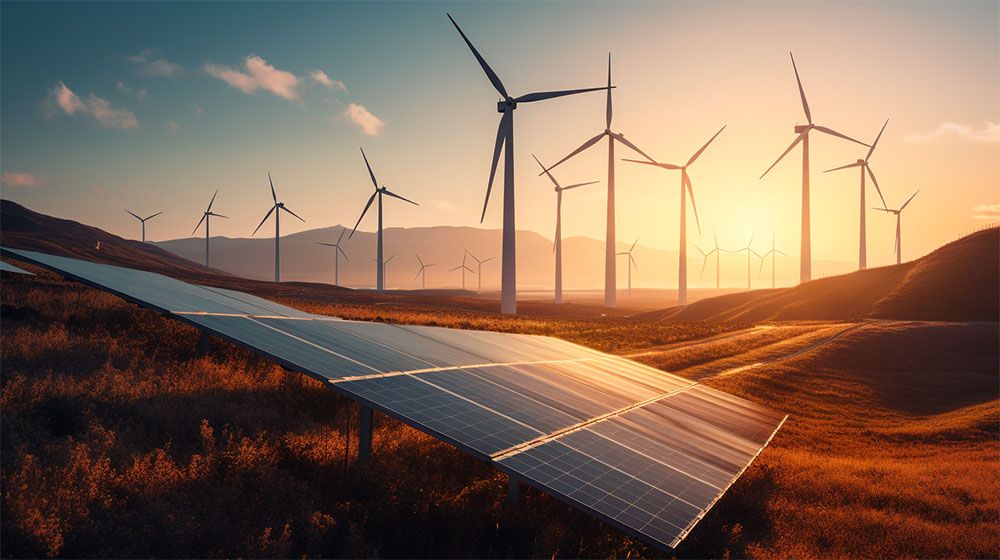
ClimateTech, short for climate technology, refers to the development and deployment of innovative technologies that help mitigate or adapt to the impacts of climate change.
It encompasses a wide range of solutions geared towards reducing greenhouse gas emissions, preserving biodiversity and natural ecosystems, and enhancing the resilience of communities and infrastructure to the challenges posed by a changing climate. ClimateTech innovation is crucial in achieving a sustainable, low-carbon future for all, from renewable energy sources and energy-efficient buildings to carbon capture and storage.
ClimateTech goes beyond traditional efforts to reduce emissions, designed to tackle the root causes of climate change. It primarily focuses on greenhouse gas emissions, offering efficient and cost-effective solutions. This approach is far more comprehensive and holistic than traditional energy management approaches, which often need an integrated approach.
Examples of ClimateTech solutions include:
Smart Grids
A smart grid is an electricity supply network that uses digital communications technology to detect and react to changes in electricity demand in real time. The grid can be optimised for efficiency and reliability while reducing emissions when using smart devices, such as sensors and meters.
Renewable Energy
Renewables accounted for 28.7% of global electricity generation in 2021, with a modest growth of 0.4 percentage points. Solutions like solar, wind, hydro, and geothermal energy help reduce greenhouse gas emissions and provide sustainable energy.
Battery Storage
Battery storage refers to developing and using rechargeable batteries that store and release energy. It is the process of capturing, storing, and releasing energy for later use. When renewable energy sources are unavailable, these solutions can provide backup power by storing energy from renewable sources, such as solar and wind. Therefore, it is an essential part of our everyday life, from powering our smartphones and laptops to providing energy to electric cars and homes.
Carbon Capture and Storage Technologies (CCS)
Carbon Capture and Storage is a collection of technologies that can combat climate change by reducing carbon dioxide (CO2) emissions. The idea behind CCS is to capture the CO2 generated by burning fossil fuels before it is released into the atmosphere.
According to TWI-Global, CCS can capture up to 90% of CO2 emissions released by burning fossil fuels during electricity generation and industrial processes.
Sustainable Agriculture
Sustainable agriculture consists of environment-friendly farming methods that allow crops or livestock production without damage to human or natural systems. Some examples of sustainable agricultural practices are crop rotation, agroforestry, permaculture, and water conservation. Farmers practising sustainable agricultural practices can produce food with fewer chemical fertilisers and pesticides, reducing environmental impact.
Electric Vehicles
Governments and automakers worldwide promote electric vehicles as a crucial technology in reducing oil consumption and combating climate change. EVs can reduce emissions and help decarbonise the transportation sector.
Replacing gasoline-powered cars with electric vehicles will reduce greenhouse gas emissions, helping to create a more sustainable transportation system.
ClimateTech is an Umbrella Term
In other words, ClimateTech is an umbrella term for technologies that help mitigate the effects of climate change. Rather than reducing carbon emissions in existing energy sources, ClimateTech seeks to transform how we produce and consume it. Focusing on innovative technologies such as renewable energy, energy storage, and carbon capture is part of a larger strategy.
For instance, in ClimateTech, a key focus is on implementing battery technology for achieving net-zero emissions. While battery technology has immense potential to store energy from renewable sources and reduce emissions, its widespread implementation faces several challenges and opportunities, which we will explore in the next section.
Before we explore how organisations can benefit from ClimateTech, let's dive a little deeper into several technologies:
The Need for Battery Technology in Achieving Net-Zero Emissions
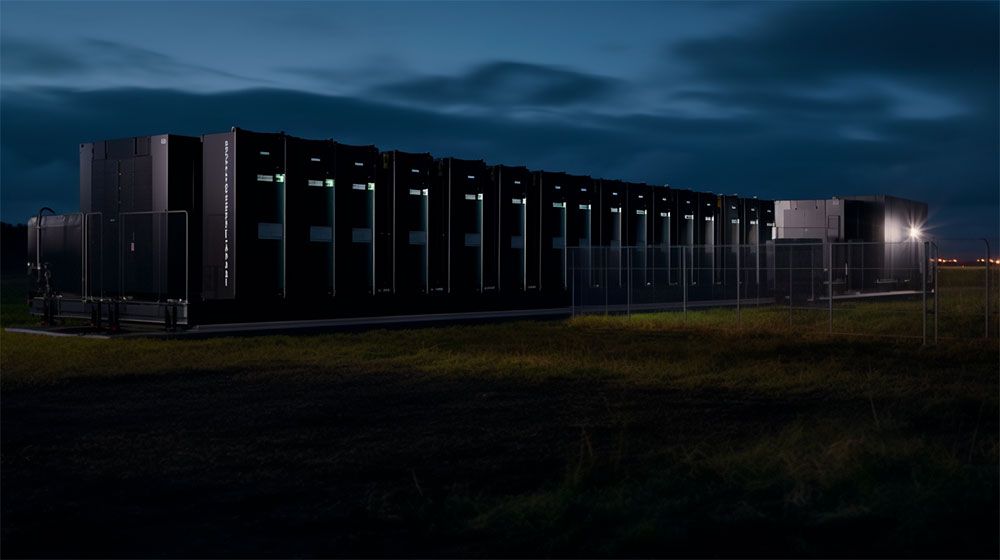
Battery technology is a critical technology in unlocking net-zero emissions. As we shift towards renewable energy sources like wind and solar, battery technology can help store and manage this energy efficiently, ensuring it is available when needed. With the right investments and research, battery technology can also help power heavy industries like aviation and shipping, which significantly contribute to emissions.
Recent advancements in lithium-ion battery technology have resulted in more efficient and longer-lasting batteries. AI can significantly improve the efficiency and reliability of lithium-ion batteries by optimising their design and performance. AI algorithms can analyse battery performance and usage data to develop predictive models that can optimise battery performance in real-time, reducing energy consumption and emissions associated with charging and discharging batteries.
Use cases for potential opportunities of battery technology
Electric Vehicles
Battery technology is the key enabler of electric vehicles (EVs), which produce zero emissions during operation. As battery technology improves, EVs become more efficient and cost-effective, making them an increasingly attractive alternative to gasoline-powered cars.
In a smart-grid future, electric vehicles could play a crucial role in stabilising the power grid by serving as reliable batteries that power the system. With the increasing adoption of renewable energy sources like solar and wind power, the grid faces new challenges in managing the variability of these sources. EVs could address this challenge by storing excess renewable energy during low demand and feeding it back into the grid during peak demand. This could reduce the need for additional power plants and the strain on the grid during peak usage times. As more and more people switch to EVs, the potential for these vehicles to serve as reliable batteries for the power grid will only continue to grow, helping to create a more sustainable energy future.
Renewable Energy Storage
Battery technology can store energy generated by renewable sources like solar and wind power, which can be used when the sun isn't shining, or the wind isn't blowing. This helps to balance the grid and reduce reliance on fossil fuel power plants.
Grid Stabilisation
Batteries can stabilise the grid by providing ancillary services such as frequency regulation and voltage support. This can help to integrate more renewable energy into the grid and reduce emissions from power generation.
Backup Power
Batteries provide backup power during peak demand periods or a power outage. This helps to maintain a consistent electricity supply and prevent disruption for businesses, homes, and other essential services.
Despite the potential of battery technology, there are certain challenges associated with its implementation, including the high cost of battery technology, the current lack of infrastructure across commercial buildings, the limited lifespan and the technology's limitations as it is still being developed. However, artificial intelligence (AI) can overcome many of these limitations quicker.
Unlocking the Potential of Battery Technology with AI for Net-Zero Emissions
Integrating AI can help overcome these challenges and improve the efficiency and sustainability of battery technology.
One of the primary challenges is optimising battery performance and longevity. AI algorithms can analyse data on battery usage, temperature, and other factors to develop predictive models that optimise battery performance and extend battery life. For example, Tesla uses AI to improve battery life and range.
Another issue is the sourcing and recycling of materials used in batteries. Many of these materials, such as lithium and cobalt, are finite resources that can have significant environmental impacts. AI can help optimise the sourcing and recycling of these materials by identifying more sustainable sources and developing more efficient recycling processes. For example, IBM uses AI to reduce reliance on cobalt in batteries.
Implementing battery technology at scale requires a robust charging and energy storage infrastructure. AI can help optimise the placement and usage of charging stations and energy storage facilities, reducing the need for fossil fuel backup power. ChargePoint, a leading electric vehicle charging network, uses AI algorithms to optimise the placement of its charging stations.
The Need for Biofuels for Sustainable Transportation
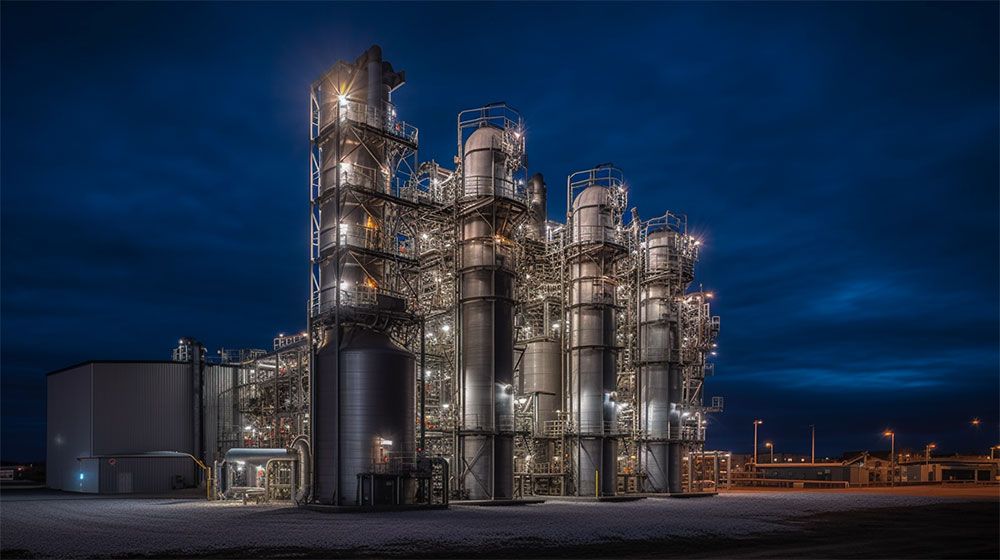
Biofuels are renewable energy sources derived from organic matter, such as plants and animals. They are considered an alternative to fossil fuels and are becoming increasingly popular due to concerns over greenhouse gas emissions and the depletion of non-renewable resources.
Biofuels can be used in various ways, including powering vehicles, generating electricity, and heating buildings. The most common biofuels are ethanol, made from crops such as corn and sugarcane, and biodiesel, made from vegetable oils and animal fats.
In 2021, the U.S. produced approximately 15 billion gallons of ethanol, as reported by the U.S. Bioenergy Statistics. Using biofuels can help reduce emissions of harmful pollutants and lower our dependence on foreign oil. However, there are also concerns about the impact that increased production of biofuels can have on land use and food prices.
As the world continues to explore alternatives to traditional energy sources, biofuels will likely play an important role in the transition to a more sustainable future.
Advantages of Biofuels
Reduced Greenhouse Gas Emissions
Studies from the U.S. Office of Energy Efficiency and Renewable Energy conducted in 2022 have shown that biofuels release much fewer greenhouse gas (GHG) emissions than conventional petroleum fuels. One particular biofuel, known as cellulosic ethanol, has the potential to decrease GHG emissions by as much as 86%.
Renewable Energy Source
Biofuels are renewable, meaning they will never run out as long as we have access to organic matter that can be converted into fuel. This makes them a viable alternative to non-renewable sources of energy, such as fossil fuels.
Reduced Dependence on Foreign Oil
Biofuels reduce the need for imported petroleum, making them an attractive option for countries looking to reduce their dependence on foreign oil. This can lead to improved energy security and increased economic stability.
Challenges Related to Biofuels
Despite these advantages, certain challenges are associated with using biofuels as an alternative energy source. These include:
Land use Change
Increased production of biofuels can lead to land use changes, such as deforestation and the conversion of agricultural land for biofuel crops. The process known as indirect land use change (ILUC) can have a devastating impact on ecosystems and local communities.
The amount of land required to grow enough biomass to meet current energy demands is so great that we cannot simultaneously meet our energy needs and grow enough food as well.
Food Price Volatility
Increased biofuel production could lead to higher food prices, as cropland is diverted from producing food to producing biofuel feedstock. This could especially impact developing countries, where food security is already a problem.
Water Use
Biofuels can require large amounts of water for production, depending on their source. In fact, the water footprint of biofuels can be 55 to 246 times higher than that of fossil fuels.
This increased demand for water can put additional pressure on already limited water resources in certain regions, exacerbating existing water scarcity issues. Therefore, it is crucial to consider the water requirements of biofuel production when evaluating their sustainability and potential impacts on the environment.
How AI is Advancing the Use of Biofuels to Reduce Emissions
Despite all these benefits, we need to consider that the production of biofuels can be resource-intensive and may require a large amount of water, fertiliser, and land to grow the necessary crops. This is where AI can also play a crucial role in improving the efficiency of biofuel production and synthetic biology. For example, AI can help optimise the use of resources and reduce waste in the production process, leading to a more sustainable and cost-effective approach.
AI can also be used to identify the best locations to grow crops for biofuel production, considering factors such as soil quality, climate, and water availability.
In addition to optimising the production of biofuels, AI can also improve their performance in transportation. AI can identify the optimal blend of biofuels and traditional fuels based on engine performance, fuel efficiency, and emissions. AI can also be used to develop more advanced biofuels with higher energy density and lower emissions.
Fission's Role in Achieving Net-Zero Emissions

Fission is a nuclear reaction that involves splitting an atomic nucleus into two smaller nuclei, accompanied by releasing a large amount of energy.
This reaction plays a crucial role in pursuing net-zero emissions, as it produces vast amounts of energy without emitting harmful greenhouse gasses. Nuclear power plants use fission to generate electricity, which can then be used to power homes, businesses, and industries. While there are concerns regarding nuclear power's safety and waste management, it remains one of the most promising low-emission energy sources.
Increasing our use of nuclear power is crucial if we hope to achieve carbon neutrality in the near future.
While some organisations have continued to rely on nuclear power as a low-carbon energy source, the role of fission in achieving net-zero emissions is a topic of ongoing debate. Some argue that the risks associated with nuclear power, including the potential for accidents and the challenges of nuclear waste disposal, outweigh its benefits. Others argue that nuclear power can play a role in reducing greenhouse gas emissions, particularly in countries where renewable energy sources are not yet viable alternatives.
The relevance of fission in achieving net-zero emissions will depend on various factors, including the specific context and priorities of individual organisations and the regulatory and policy environments in which they operate. While fission may offer certain advantages in terms of energy generation and emissions reduction, it is important for organisations to carefully consider the risks and trade-offs associated with this technology and to pursue a comprehensive approach to achieving net-zero emissions that includes a range of renewable and low-carbon energy sources.
Use Cases of Fission in Reducing Emissions for Organisations
Electricity Generation
Nuclear fission is used in electricity generation because it releases much more energy per mass than coal and is much more efficient. Nuclear power plants can produce nearly two times more electricity than coal plants with the same amount of fuel. This makes it ideal for large-scale electricity production.
Decarbonisation of industries
Fission can be used to decarbonise the industry by replacing fossil fuels with clean nuclear energy. This could reduce emissions in steel and cement production sectors, which rely heavily on fossil fuels.
Transportation
Fission can be used in transportation by powering electric and hydrogen vehicles. This could reduce emissions from the transportation sector, which currently accounts for a large share of global greenhouse gas emissions.
According to The World Nuclear, the use of nuclear energy today avoids emissions roughly equivalent to removing one-third of all cars from the world’s roads.
Backup Power
Fission can also be used as a backup power source when other renewable energy sources may not be feasible. This could help provide reliable power in cases of natural disasters and other emergencies.
Although nuclear energy has its benefits, it is crucial to acknowledge its possible difficulties and take appropriate measures to handle them.
Challenges to Switch to Fission Technology
Safety Concerns
Nuclear power plants use radioactive materials, which can have potential health risks if not properly managed. This is why it is necessary to ensure that safe and secure systems are in place to handle potential accidents or system failures.
Nuclear Waste Management
Nuclear radioactive waste can harm humans and the environment if not managed properly. The waste can be classified as high-level or low-level radioactive waste, depending on its radioactivity level. Strict standards and regulations must be met when disposing of this waste.
High-Cost
The initial costs associated with building and operating a nuclear power plant are much higher than those associated with other energy sources, estimated between $6 billion and $9 billion for each 1,100 MW plant. This can make it difficult to find the funding needed to develop and implement the technology.
Public Acceptance
Public acceptance of nuclear energy remains a major challenge in many countries. This is due to safety and environmental concerns and the legacy of accidents such as Chornobyl and Fukushima. It is important to educate the public about the safety of nuclear energy and its potential benefits to gain their acceptance.
Proliferation Concerns
Nuclear weapons are a major concern for governments and international organisations, as they can be used for destructive purposes. This is why ensuring that fission technology is only used for peaceful purposes and cannot be diverted to weapons development is important.
The Role of AI in Ensuring the Safety and Efficiency of Nuclear Fission
The safety and efficiency of nuclear fission can be significantly improved through AI. For example, AI can be used to monitor and analyse data on the performance of nuclear reactors, enabling real-time adjustments to improve their efficiency and safety. AI can also be used to predict and prevent potential failures, reducing the risk of accidents and ensuring the safe operation of nuclear reactors.
Furthermore, AI can contribute to optimising nuclear waste management by identifying novel approaches to recycling and reusing nuclear materials. Through analysis of nuclear waste composition and properties, AI can recommend methods to reduce the environmental impact of nuclear fission.
The Potential of Hydrogen as an Alternative Fuel Source
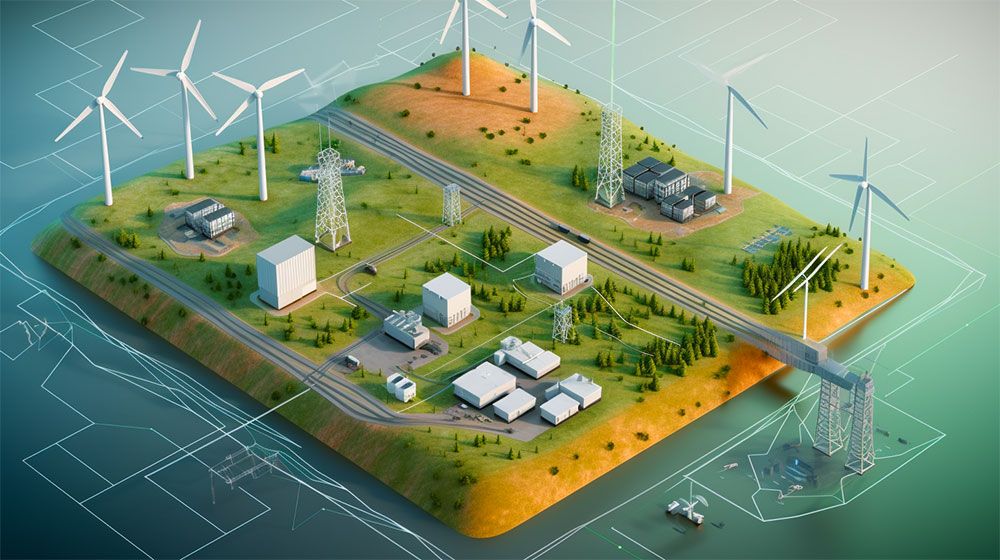
Hydrogen is a chemical element regarded as one of the essential elements in the universe. It is the lightest and simplest of all elements, featuring only one proton and one electron.
Hydrogen plays a crucial role in the formation of stars and the creation of chemical compounds, which makes it a vital element in various industries, including agriculture, medicine, and transportation.
Hydrogen is a promising alternative to traditional fossil fuels in the energy sector, as it is a clean and renewable energy source. With the increasing demand for sustainable energy and efforts to reduce carbon emissions, hydrogen is becoming a significant player in achieving a more sustainable future. Therefore, the importance of hydrogen cannot be overstated, and it provides an array of benefits to different industries and the environment.
Use Cases of Hydrogen for Reducing Emissions
Fuel Cells
Fuel cell vehicles use hydrogen to generate electricity and produce only water and heat as byproducts. This innovative technology offers great benefits, not only for the environment but also for the economy.
It is also worth noting that fuel cell vehicles have a longer driving range and shorter refuelling time than most electric cars.
Power Generation
Hydrogen can be used as a fuel for power generation in gas turbines and fuel cells. When hydrogen is burned in a gas turbine, the only by-product is water vapour, making it a clean source of power. Fuel cells also generate electricity with no harmful emissions.
Industrial Processes
In industries such as refining and petrochemical production, hydrogen can replace traditional sources of energy that produce substantial emissions during the production process. It provides a unique opportunity to reduce carbon footprint and move towards a sustainable future.
Challenges Related to Hydrogen
There are several challenges associated with implementing hydrogen as an alternative fuel source. These include:
High-Cost
The cost of producing hydrogen is still relatively high compared to traditional fuel sources. This makes it difficult for people and businesses to switch to hydrogen, as the current costs are too prohibitive. AI can help optimise the production and distribution of hydrogen by analysing data on the availability of renewable energy sources, the demand for hydrogen, and the most efficient ways to transport and store it. For example, companies like Siemens Energy are using AI to optimise the production and distribution of hydrogen, ensuring a more sustainable and cost-effective supply chain.
Safety
Hydrogen is highly flammable, which can cause safety issues if not properly managed. Therefore, companies must ensure that they have proper safety protocols to prevent accidents. However, AI can contribute to the safe use of hydrogen by developing predictive models that can identify potential safety hazards and recommend mitigation strategies.
Infrastructure
There currently needs to be more infrastructure to support hydrogen use, as most vehicles and equipment still rely on traditional fuel sources. This makes it difficult for people to switch to hydrogen as an alternative fuel source.
Energy Efficiency
Hydrogen production requires energy, and the efficiency of the production process can vary depending on the method used. Some methods, such as steam methane reforming, can be energy-intensive and emit greenhouse gasses. AI can be the best way to identify new opportunities for hydrogen use that can further reduce greenhouse gas emissions.
Scaling Solar PV for Net-Zero Emissions

Renewable energy sources, also known as renewables, refer to sources of energy that can be replenished naturally, such as solar, wind, and hydropower. They are becoming increasingly important as we strive to reduce carbon emissions and combat climate change.
Harnessing renewables can significantly reduce our reliance on non-renewable sources of energy, such as fossil fuels, which produce harmful emissions that contribute to global warming.
As the demand for renewable energy continues to grow, we must recognise the importance of investing in and utilising these sustainable energy sources.
Solar photovoltaics and hydropower have several use cases in reducing emissions and promoting sustainable development.
Solar Photovoltaics
Solar photovoltaics is a rapidly growing technology that allows us to harness the sun's energy to generate electricity. Photovoltaic (PV) cells convert sunlight directly into electricity so that solar panels can power homes, businesses, and even entire communities. In this context, solar photovoltaics have become critical in pursuing sustainable energy systems and transitioning to a low-carbon future. These are some of its most relevant use cases:
Distributed Energy Generation
Solar Photovoltaics (PV) is the world's largest renewable energy source. Solar photovoltaic systems are usually installed on rooftops and in residential or commercial areas. They are a sustainable alternative to traditional electricity-generating methods like coal, oil, and natural gas power plants.
Large-scale Power Generation
Large-scale solar (LSS), or solar farms, can generate hundreds of kilowatts to thousands of megawatts of solar power. These systems are crucial in meeting the energy and environmental needs of the 21st century.
Agricultural and Livestock Farms
On farms and ranches across the country, photovoltaic energy is used to power various systems. Water pumps to fill troughs for animals, milking systems and milk cooling, and electric fences, can all benefit from the advantages of solar energy.
Hydropower: Employing Water to Achieve Net Zero

Hydropower is a well-established technology that harnesses the power of moving water to generate electricity. Hydropower plants use water turbines to convert kinetic energy into mechanical force, which is used to generate electricity on a large scale. This technology has been used for decades, and it remains one of the most reliable and efficient sources of renewable energy available.
In addition to its energy generation capabilities, hydropower can also provide other benefits such as water management, flood control, and recreational opportunities. As the world seeks to reduce greenhouse gas emissions and address climate change, hydropower is expected to play a critical role in transitioning to a sustainable energy future.
Use Cases Related to Hydropower
Electricity Generation
Hydropower is one of the oldest renewable energy sources, and its use has been documented since ancient times. The force of moving water is used to turn turbines, producing electricity sent to consumers through transmission lines. This method allows for efficient clean energy production, which can then be utilised in multiple ways, including powering homes and businesses.
Irrigation
While using hydropower to power irrigation systems, far greater amounts of water can be pumped and distributed throughout fields, allowing farmers to cultivate much more productive crops than using traditional and outdated methods.
Flood Control
Hydropower dams can be powerful tools in the fight against floods. By carefully managing water flow, these structures make it possible to reduce the risk of flooding and the destruction that can come with it. Not only do they help protect people and property from potentially devastating flood events, but they also create renewable energy and other resources such as irrigation water.
Scaling Solar and Hydropower to Meet Demand
Here is how to Scale up Solar Photovoltaics and Hydropower to meet growing demand:
- Invest in Research and Development: To improve the efficiency of renewable energy technologies and reduce their costs, governments and industries must invest in research and development.
- Increase Investment: To scale up renewable energy technologies, there needs to be increased investment in infrastructure, such as solar farms and hydropower plants.
- Subsidies: Governments can provide financial incentives such as subsidies and tax breaks to encourage businesses and households to switch to renewable energy sources.
- Education: To make the transition to renewable energy more successful, people must be educated about the benefits of renewable energy technologies and how they can be used in their homes and businesses.
- Collaboration: Governments and industry must collaborate to share resources, knowledge, and best practices for scaling up solar photovoltaics and hydropower.
NetZero and Business Benefits from Climate Change
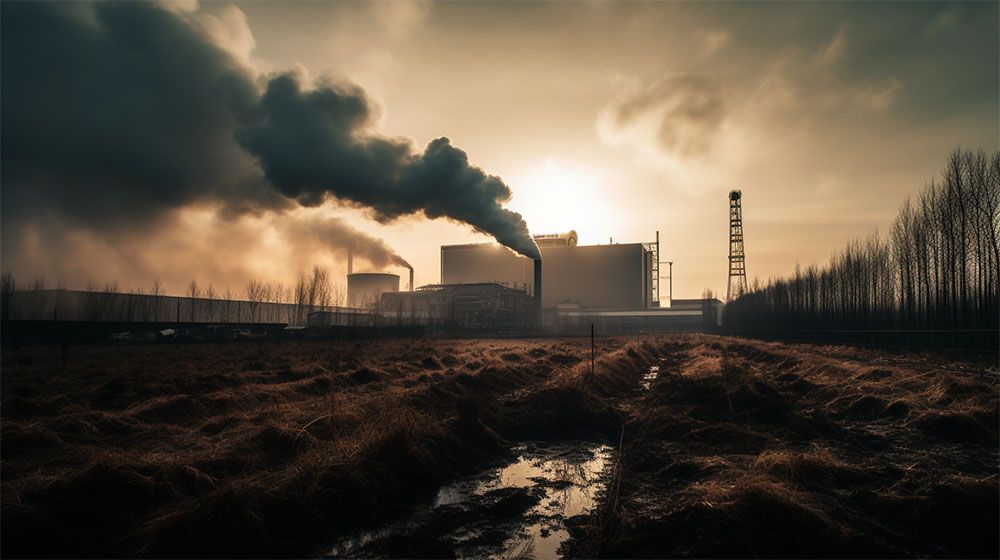
Every day, we hear more and more about the effects of climate change on our world. While there is undoubtedly a moral imperative to address this global phenomenon, significant business advantages can be gained from taking action.
In particular, organisations should consider striving for NetZero – becoming carbon neutral through reducing emissions and offsetting them – as it can have a major impact on both the bottom line and public image.
Let’s look at why NetZero makes common business sense.
First and foremost, reducing emissions through NetZero will save businesses money over time.
For instance, energy-saving strategies such as switching to renewable sources or insulating buildings can reduce energy costs significantly in the long run.
Moreover, companies that embrace sustainability are rewarded by government incentives and grants that help cover the upfront cost of green initiatives like installing solar panels or implementing energy-efficient technologies.
Net Zero also has great PR potential. Customers today are savvy and increasingly expect businesses to operate sustainably and ethically; demonstrating that your organisation is committed to making a positive environmental impact will go a long way toward boosting your public image and creating consumer loyalty.
Also, measuring your carbon footprint allows you to accurately track your sustainability efforts over time. It gives you valuable data which can be used to inform future decisions regarding environmental policy.
Embracing Net Zero can increase employee engagement and workplace satisfaction due to its focus on corporate social responsibility (CSR).
Having these CSR policies in place may even allow you to attract top talent who want the assurance that their job won’t harm the planet; Millennial and Gen Z workers especially are increasingly looking for jobs with a purpose that aligns with their values.
We can reduce our emissions by taking action now while at the same time offsetting unavoidable ones through sustainable practices like reforestation or investing in renewable energy projects. You will ensure that your business remains competitive while contributing positively towards the world around us — a win-win situation if ever there was one!
How Can Governments Promote Net Zero Efforts?
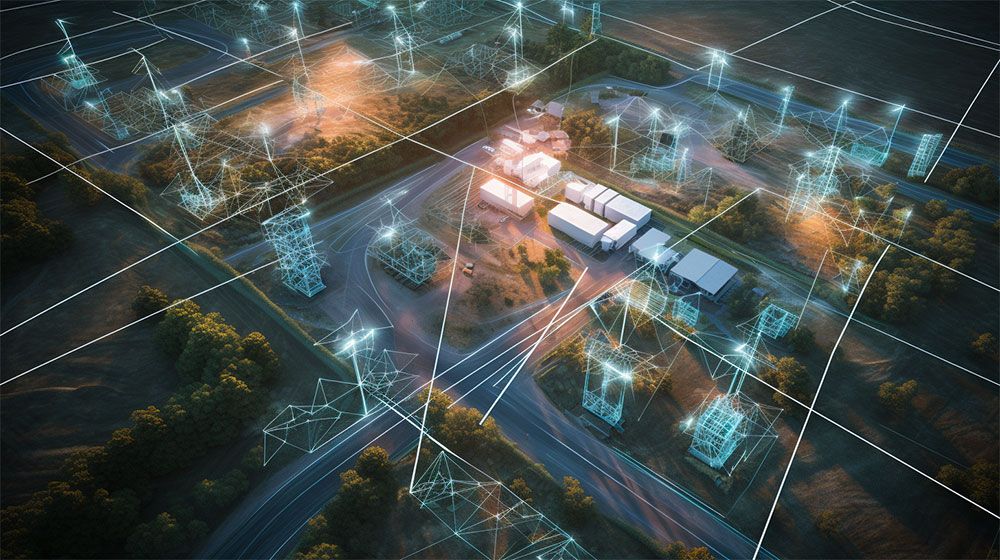
The world is focused on achieving Net Zero carbon emissions, but it is not just individual citizens stepping up to the plate. Governments around the globe are also playing an increasingly important role in encouraging businesses to pursue Net Zero.
Let's look at what governments can do to incentivise businesses to reduce their carbon footprint and move closer to achieving Net Zero.
Pass Laws/Regulations
Governments can pass laws or regulations requiring businesses within their jurisdiction to meet certain sustainability standards. This could include setting strict energy efficiency requirements for buildings or requiring companies to disclose details about their emissions.
Impose Taxes
Governments can also impose taxes or fees on companies producing large amounts of pollution, incentivising them to reduce emissions and invest in more sustainable practices.
Financial Incentives
Another way governments can help is by providing financial incentives such as grants, subsidies, loans, and tax credits for businesses looking to invest in renewable energy sources or implement new technologies that reduce their environmental impact.
These incentives can make it easier for companies—especially small businesses—to afford investments in sustainability and reduce costs associated with efforts like switching from fossil fuels to renewable energy sources.
Examples of Countries Encouraging Net Zero
Over the past few years, many countries have realised how important it is to reduce their contributions to global carbon emissions.
With this concerted effort, more than 70 countries comprising most global emissions have committed to achieving net zero by 2050. This ambitious goal requires significant advancements in climate legislation and technological innovation, alongside movements towards greater sustainability.
Even the United States and China are on board, so the chances of success seem higher than ever before. Long term, this promises a lower environmental footprint for everyone in the long run.
The use of artificial intelligence in optimising physical and digital systems can help organisations achieve significant efficiency improvements and reduce their carbon footprint. Using data from sensors and other sources, AI algorithms can identify patterns and make predictions that optimise energy use, reduce waste, and improve productivity.
Steps for Organisations: Achieving Net-Zero with AI and ClimateTech
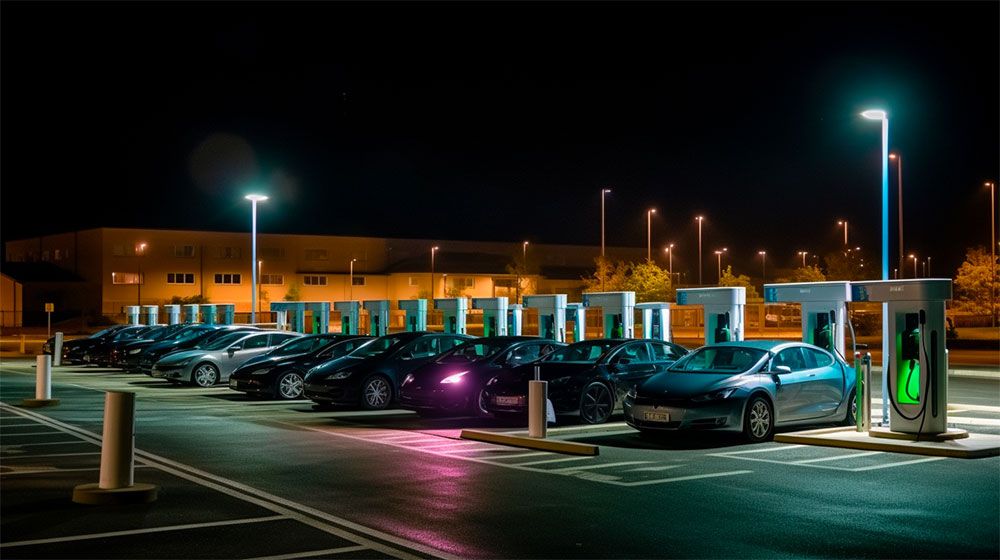
Organisations can take several steps based on the ClimateTech solutions discussed to achieve net-zero emissions in the coming decades. One important step is transitioning to renewable energy sources, such as solar and wind power, and using energy storage systems to balance the grid. It is also important to improve the energy efficiency of buildings and industrial processes by using smart sensors, advanced controls, and other technologies.
In addition to these measures, organisations can leverage AI and machine learning to optimise their energy use and reduce waste. This can involve using algorithms to identify patterns in energy consumption and make predictions about future demand, which can inform decisions about when and how to use energy resources most effectively. AI can also optimise transportation and logistics systems, reducing fuel consumption and emissions.
Consequently, achieving net-zero emissions will require a comprehensive approach involving a range of solutions, including renewable energy, energy efficiency, and carbon capture and storage. With the help of artificial intelligence and other technologies, organisations can identify opportunities to reduce their carbon footprint and take action to achieve their sustainability objectives in the coming decades.
AI Applications in ClimateTech
As demand for clean energy grows, there are challenges to scaling up these technologies. AI can help with these challenges.
As part of this challenge, we find that renewables can be intermittent due to weather conditions. AI can predict weather patterns and energy demand, making renewable energy more reliable, especially when used in a smart grid. For example, Google and DeepMind use AI to optimise wind energy production by predicting wind patterns and adjusting turbines.
As we grapple with the urgent need to reduce carbon emissions and mitigate the impacts of climate change, AI has emerged as a powerful tool in the ClimateTech arsenal. AI can analyse vast amounts of environmental and climate data to identify patterns, make predictions, and optimise systems for more accurate and effective decision-making.
Developing predictive models for renewable energy production is one exciting application of generative AI in ClimateTech. Generated AI can predict how much energy a solar or wind farm is likely to produce over time by analysing data from weather sensors and energy production systems. This information can help energy producers optimise the use of renewable energy sources and balance the grid to meet energy demand, reducing carbon emissions and supporting the transition to a low-carbon future.
AI can also help scale up renewable energy sources by analysing data on energy demand, resource availability, and technology advancements. IRENA uses AI to identify suitable locations for hydropower development to expand renewable infrastructure sustainably and contribute toward achieving Net Zero emissions globally.
In various industries, AI can be used to optimise energy use and reduce waste. AI algorithms can analyse data from sensors and other sources to identify opportunities to reduce energy consumption, improve efficiency, and lower emissions. For instance, in manufacturing, AI can analyse data from sensors on machines and buildings to identify areas where energy use can be reduced or equipment can be optimised for greater efficiency.
AI has enormous potential to support the ClimateTech mission of achieving net-zero emissions and mitigating the impacts of climate change. Although this technology may be at the very beginning of its potential, we can use the power of AI in the coming decades to make better decisions, streamline our workflows, and create a more sustainable future for everyone.
Final Thoughts
These concerns and advancements are interlinked and give us a unique opportunity to make measurable progress in tackling climate change.
We have seen how ClimateTech can offer novel solutions over traditional approaches, and the role fission and renewables can play in reducing emissions. Furthermore, we understand the advantages of hydrogen as a fuel source and the potential of metallic foam and lithium when it comes to increased energy efficiency and reduced emissions.
Businesses need to seize this momentous opportunity for change by realising that net zero goals will benefit not just our environment but also their businesses. Governmental organisations must be willing to incentivise this endeavour further if true progress is to be made.
The effects of climate change have been ignored for too long; let’s take ownership of our own future and act now with the help of the latest technology for our advantage.
Images: MidJourney





